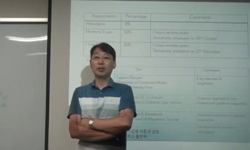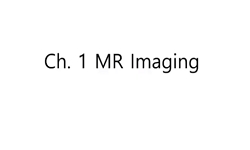Objective: This study aimed to investigate the blood-brain barrier (BBB) disruption in mild traumatic brain injury (mTBI) patients with post-concussion syndrome (PCS) using dynamic contrast-enhanced (DCE) magnetic resonance (MR) imaging and automatic ...
http://chineseinput.net/에서 pinyin(병음)방식으로 중국어를 변환할 수 있습니다.
변환된 중국어를 복사하여 사용하시면 됩니다.
- 中文 을 입력하시려면 zhongwen을 입력하시고 space를누르시면됩니다.
- 北京 을 입력하시려면 beijing을 입력하시고 space를 누르시면 됩니다.



Blood-Brain Barrier Disruption in Mild Traumatic Brain Injury Patients with Post-Concussion Syndrome: Evaluation with Region-Based Quantification of Dynamic Contrast-Enhanced MR Imaging Parameters Using Automatic Whole-Brain Segmentation
한글로보기https://www.riss.kr/link?id=A107234877
-
저자
Yoen Heera (Department of Radiology, Seoul National University Hospital, Seoul National University College of Medicine, Seoul, Korea.) ; Yoo Roh-Eul (Department of Radiology, Seoul National University Hospital, Seoul National University College of Medicine, Seoul, Korea.) ; Choi Seung Hong (Department of Radiology, Seoul National University Hospital, Seoul National University College of Medicine, Seoul, Korea.Center for Nanoparticle Research, Institute for Basic Science (IBS), Seoul National University, Seoul, Korea.School of Chemical and B) ; Kim Eunkyung (Department of Rehabilitation Medicine, Seoul National University Hospital, Seoul National University College of Medicine, Seoul, Korea.) ; 오병모 (서울대학교병원) ; Yang Dongjin (Department of Radiology, Seoul National University Hospital, Seoul National University College of Medicine, Seoul, Korea.) ; Hwang Inpyeong (Department of Radiology, Seoul National University Hospital, Seoul National University College of Medicine, Seoul, Korea.) ; Kang Koung Mi (Department of Radiology, Seoul National University Hospital, Seoul National University College of Medicine, Seoul, Korea.) ; Yun Tae Jin (Department of Radiology, Seoul National University Hospital, Seoul National University College of Medicine, Seoul, Korea.) ; Kim Ji-hoon (Department of Radiology, Seoul National University Hospital, Seoul National University College of Medicine, Seoul, Korea.) ; Sohn Chul-Ho (Department of Radiology, Seoul National University Hospital, Seoul National University College of Medicine, Seoul, Korea.)
- 발행기관
- 학술지명
- 권호사항
-
발행연도
2021
-
작성언어
English
- 주제어
-
등재정보
KCI등재,SCIE,SCOPUS
-
자료형태
학술저널
-
수록면
118-130(13쪽)
-
KCI 피인용횟수
0
- DOI식별코드
- 제공처
-
0
상세조회 -
0
다운로드
부가정보
다국어 초록 (Multilingual Abstract)
Objective: This study aimed to investigate the blood-brain barrier (BBB) disruption in mild traumatic brain injury (mTBI) patients with post-concussion syndrome (PCS) using dynamic contrast-enhanced (DCE) magnetic resonance (MR) imaging and automatic whole brain segmentation.
Materials and Methods: Forty-two consecutive mTBI patients with PCS who had undergone post-traumatic MR imaging, including DCE MR imaging, between October 2016 and April 2018, and 29 controls with DCE MR imaging were included in this retrospective study. After performing three-dimensional T1-based brain segmentation with FreeSurfer software (Laboratory for Computational Neuroimaging), the mean Ktrans and vp from DCE MR imaging (derived using the Patlak model and extended Tofts and Kermode model) were analyzed in the bilateral cerebral/cerebellar cortex, bilateral cerebral/cerebellar white matter (WM), and brainstem. Ktrans values of the mTBI patients and controls were calculated using both models to identify the model that better reflected the increased permeability owing to mTBI (tendency toward higher Ktrans values in mTBI patients than in controls). The Mann-Whitney U test and Spearman rank correlation test were performed to compare the mean Ktrans and vp between the two groups and correlate Ktrans and vp with neuropsychological tests for mTBI patients.
Results: Increased permeability owing to mTBI was observed in the Patlak model but not in the extended Tofts and Kermode model. In the Patlak model, the mean Ktrans in the bilateral cerebral cortex was significantly higher in mTBI patients than in controls (p = 0.042). The mean vp values in the bilateral cerebellar WM and brainstem were significantly lower in mTBI patients than in controls (p = 0.009 and p = 0.011, respectively). The mean Ktrans of the bilateral cerebral cortex was significantly higher in patients with atypical performance in the auditory continuous performance test (commission errors) than in average or good performers (p = 0.041).
Conclusion: BBB disruption, as reflected by the increased Ktrans and decreased vp values from the Patlak model, was observed throughout the bilateral cerebral cortex, bilateral cerebellar WM, and brainstem in mTBI patients with PCS.
참고문헌 (Reference)
1 Rutgers DR, "White matter abnormalities in mild traumatic brain injury: a diffusion tensor imaging study" 29 : 514-519, 2008
2 Ruff R, "Two decades of advances in understanding of mild traumatic brain injury" 20 : 5-18, 2005
3 Heye AK, "Tracer kinetic modelling for DCE-MRI quantification of subtle blood-brain barrier permeability" 125 : 446-455, 2016
4 King NS, "The Rivermead Post concussion symptoms Questionnaire: a measure of symptoms commonly experienced after head injury and its reliability" 242 : 587-592, 1995
5 McMahon PJ, "Symptomatology and functional outcome in mild traumatic brain injury: results from the prospective TRACK-TBI study" 31 : 26-33, 2014
6 Mittal S, "Susceptibilityweighted imaging: technical aspects and clinical applications, Part 2" 30 : 232-252, 2009
7 Coronado VG, "Surveillance for traumatic brain injury-related deaths--United States, 1997-2007" 60 : 1-32, 2011
8 Li W, "Spatiotemporal changes in blood-brain barrier permeability, cerebral blood flow, T2 and diffusion following mild traumatic brain injury" 1646 : 53-61, 2016
9 Fakhran S, "Sex differences in white matter abnormalities after mild traumatic brain injury: localization and correlation with outcome" 272 : 815-823, 2014
10 Yoo RE, "Quantitative dynamic contrast-enhanced MR imaging shows widespread blood-brain barrier disruption in mild traumatic brain injury patients with post-concussion syndrome" 29 : 1308-1317, 2019
1 Rutgers DR, "White matter abnormalities in mild traumatic brain injury: a diffusion tensor imaging study" 29 : 514-519, 2008
2 Ruff R, "Two decades of advances in understanding of mild traumatic brain injury" 20 : 5-18, 2005
3 Heye AK, "Tracer kinetic modelling for DCE-MRI quantification of subtle blood-brain barrier permeability" 125 : 446-455, 2016
4 King NS, "The Rivermead Post concussion symptoms Questionnaire: a measure of symptoms commonly experienced after head injury and its reliability" 242 : 587-592, 1995
5 McMahon PJ, "Symptomatology and functional outcome in mild traumatic brain injury: results from the prospective TRACK-TBI study" 31 : 26-33, 2014
6 Mittal S, "Susceptibilityweighted imaging: technical aspects and clinical applications, Part 2" 30 : 232-252, 2009
7 Coronado VG, "Surveillance for traumatic brain injury-related deaths--United States, 1997-2007" 60 : 1-32, 2011
8 Li W, "Spatiotemporal changes in blood-brain barrier permeability, cerebral blood flow, T2 and diffusion following mild traumatic brain injury" 1646 : 53-61, 2016
9 Fakhran S, "Sex differences in white matter abnormalities after mild traumatic brain injury: localization and correlation with outcome" 272 : 815-823, 2014
10 Yoo RE, "Quantitative dynamic contrast-enhanced MR imaging shows widespread blood-brain barrier disruption in mild traumatic brain injury patients with post-concussion syndrome" 29 : 1308-1317, 2019
11 Cohen BA, "Proton MR spectroscopy and MRI-volumetry in mild traumatic brain injury" 28 : 907-913, 2007
12 Albaugh MD, "Postconcussion symptoms are associated with cerebral cortical thickness in healthy collegiate and preparatory school ice hockey players" 166 : 394-400.e1, 2015
13 Lezak MD, "Neuropsychological assessment" Oxford University Press 2004
14 Shukla D, "Mild traumatic brain injuries in adults" 1 : 82-88, 2010
15 Johnson VE, "Mechanical disruption of the blood-brain barrier following experimental concussion" 135 : 711-726, 2018
16 Bouix S, "Increased gray matter diffusion anisotropy in patients with persistent post-concussive symptoms following mild traumatic brain injury" 8 : e66205-, 2013
17 Liu G, "Improved sensitivity of 3.0 tesla susceptibility-weighted imaging in detecting traumatic bleeds and its use in predicting outcomes in patients with mild traumatic brain injury" 56 : 1256-1263, 2015
18 Liu W, "Imaging cerebral microhemorrhages in military service members with chronic traumatic brain injury" 278 : 536-545, 2016
19 Weissberg I, "Imaging blood-brain barrier dysfunction in football players" 71 : 1453-1455, 2014
20 World Health Organization, "ICD-10: international statistical classification of diseases and related health problems" World Health Organization 2004
21 Benson RR, "Global white matter analysis of diffusion tensor images is predictive of injury severity in traumatic brain injury" 24 : 446-459, 2007
22 Yun TJ, "Glioblastoma treated with concurrent radiation therapy and temozolomide chemotherapy: differentiation of true progression from pseudoprogression with quantitative dynamic contrast-enhanced MR imaging" 274 : 830-840, 2015
23 Riedy G, "Findings from structural MR imaging in military traumatic brain injury" 279 : 207-215, 2016
24 Payne-James J, "Encyclopedia of forensic and legal medicine" Elsevier Ltd 2015
25 Wei XE, "Dynamics of rabbit brain edema in focal lesion and perilesion area after traumatic brain injury: a MRI study" 29 : 2413-2420, 2012
26 Yuh EL, "Diffusion tensor imaging for outcome prediction in mild traumatic brain injury: a TRACK-TBI study" 31 : 1457-1477, 2014
27 Kwon JS, "Development and standardization of the computerized memory assessment for Korean adults" 41 : 347-362, 2002
28 Thornhill RE, "Contrast-enhanced MR imaging in acute ischemic stroke:T2* measures of blood-brain barrier permeability and their relationship to T1 estimates and hemorrhagic transformation" 31 : 1015-1022, 2010
29 Wang ML, "Cognitive impairment after traumatic brain injury: the role of MRI and possible pathological basis" 370 : 244-250, 2016
30 Sourbron SP, "Classic models for dynamic contrastenhanced MRI" 26 : 1004-1027, 2013
31 Liu T, "Cerebral microbleeds: burden assessment by using quantitative susceptibility mapping" 262 : 269-278, 2012
32 Taheri S, "Blood-brain barrier permeability abnormalities in vascular cognitive impairment" 42 : 2158-2163, 2011
33 Winter C, "Blood-brain barrier dysfunction following traumatic brain injury: correlation of Ktrans (DCE-MRI) and SUVR (99mTc-DTPA SPECT) but not serum S100B" 37 : 599-606, 2015
34 Todd NV, "Blood-brain barrier damage in traumatic brain contusions" 51 : 296-299, 1990
35 Heye AK, "Assessment of blood-brain barrier disruption using dynamic contrast-enhanced MRI. A systematic review" 6 : 262-274, 2014
36 Kim YS, "Altered vascular permeability in migraine-associated brain regions: evaluation with dynamic contrast-enhanced MRI" 292 : 713-720, 2019
37 Cramer SP, "Accurate determination of bloodbrain barrier permeability using dynamic contrast-enhanced T1-weighted MRI: a simulation and in vivo study on healthy subjects and multiple sclerosis patients" 34 : 1655-1665, 2014
38 Wei XE, "A useful tool for the initial assessment of blood-brain barrier permeability after traumatic brain injury in rabbits: dynamic contrast-enhanced magnetic resonance imaging" 71 : 1645-1651, 2011
동일학술지(권/호) 다른 논문
-
Spectral Computed Tomography: Fundamental Principles and Recent Developments
- 대한영상의학회
- So Aaron
- 2021
- KCI등재,SCIE,SCOPUS
-
Noninvasive Imaging for the Evaluation of Non-Alcoholic Fatty Liver Disease Spectrum
- 대한영상의학회
- Liu Qianjiao
- 2021
- KCI등재,SCIE,SCOPUS
-
- 대한영상의학회
- Hong Wonju
- 2021
- KCI등재,SCIE,SCOPUS
-
Pictorial Review of Mediastinal Masses with an Emphasis on Magnetic Resonance Imaging
- 대한영상의학회
- Park Jin Wang
- 2021
- KCI등재,SCIE,SCOPUS
분석정보
인용정보 인용지수 설명보기
학술지 이력
| 연월일 | 이력구분 | 이력상세 | 등재구분 |
|---|---|---|---|
| 2023 | 평가예정 | 해외DB학술지평가 신청대상 (해외등재 학술지 평가) | |
| 2020-01-01 | 평가 | 등재학술지 유지 (해외등재 학술지 평가) |  |
| 2016-11-15 | 학회명변경 | 영문명 : The Korean Radiological Society -> The Korean Society of Radiology |  |
| 2010-01-01 | 평가 | 등재학술지 유지 (등재유지) |  |
| 2007-01-01 | 평가 | 등재학술지 선정 (등재후보2차) |  |
| 2006-01-01 | 평가 | 등재후보 1차 PASS (등재후보1차) |  |
| 2003-01-01 | 평가 | 등재후보학술지 선정 (신규평가) |  |
학술지 인용정보
| 기준연도 | WOS-KCI 통합IF(2년) | KCIF(2년) | KCIF(3년) |
|---|---|---|---|
| 2016 | 1.61 | 0.46 | 1.15 |
| KCIF(4년) | KCIF(5년) | 중심성지수(3년) | 즉시성지수 |
| 0.93 | 0.84 | 0.494 | 0.06 |




 KCI
KCI




